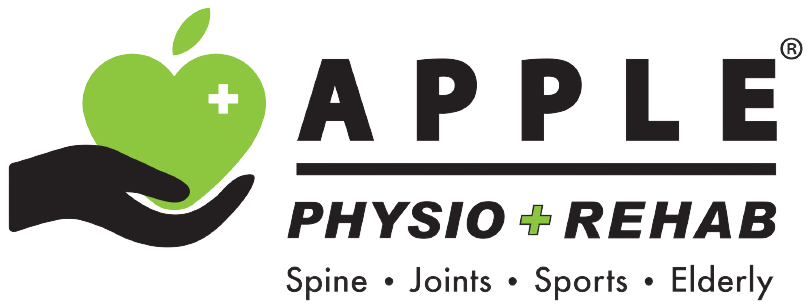Remember when we were younger and we could go to school, play, jump, and fall multiple times and nothing seemed to hurt us? We felt invincible. But as we grow older, even sitting too long or wearing the wrong shoes can mess with our movement.
The human foot consists of 26 bones, 30 joints, and over 100 muscles, tendons, and ligaments. Considering it is the most active part of the human body due to our busy lifestyles, it’s no surprise that it is susceptible to various ailments. Whether it’s a sharp heel pain while walking, or persistent soreness after exercise, foot pain can significantly impact mobility and quality of life.
Sometimes it is due to lack of care, others due to our diet and lifestyle. So, how can we diagnose and manage the pain?
Physiotherapy is an effective and non-invasive approach to diagnosing, managing, and treating foot pain. At Apple Physio, we identify the underlying cause and provide suitable foot pain treatment in Malaysia according to your pain points so you can regain comfort and mobility in your day-to-day activities.
So, let’s explore the five common causes of foot pain and how physiotherapy can help you alleviate discomfort and prevent future issues.
1. Plantar Fasciitis
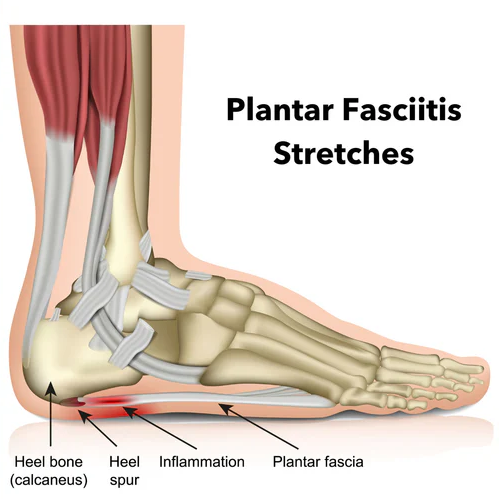
Image Source: PowerStep
If you’ve experienced sharp, stabbing pain, especially in the morning after long periods of inactivity then you might be experiencing plantar fasciitis. It is the leading cause of heel pain characterised by inflammation of the plantar fascia—a thick band of tissue connecting the heel bone to the toes. It typically causes a sharp, stabbing pain, especially in the morning or after long periods of inactivity.
Common Causes
- Prolonged standing or walking
- High-impact activities like running or jumping
- Poorly cushioned footwear
- Sudden increases in physical activity
Physiotherapy Solutions
- Plantar fasciitis exercises like stretching lengthen the plantar fascia and calf muscles, improving flexibility and reducing strain.
- Manual therapy such as deep tissue massage to alleviate tension and break down adhesions.
- Taping or orthotic support to relieve pressure on the arch and promote proper foot mechanics.
Our experts at Apple Physio provide plantar fasciitis treatment in Malaysia from A to Z so you can take control of your pain-free mobility back and get to your active lifestyle.
2. Achilles Tendinitis
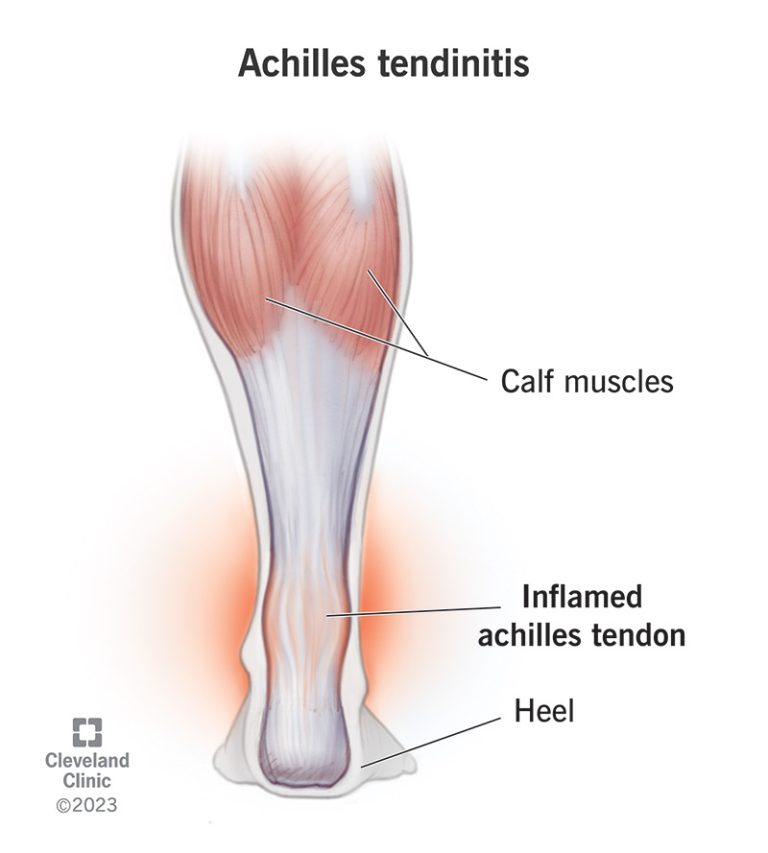
Image Source: Cleveland Clinic
If you’re an athlete or someone who consistently engages in physical or sports activities, then this pain might be all too familiar to you. Achilles tendinitis occurs when the Achilles tendon, which connects the calf muscles to the heel bone, becomes inflamed.
Causes
- Overuse from running or jumping
- Sudden increases in training intensity
- Tight calf muscles
- Inadequate warm-ups before exercise
Physiotherapy Solutions
- Strengthening exercises to promote tendon healing and improve load tolerance.
- Ice therapy to reduce inflammation and pain in acute cases.
- Gradual reintroduction of load-bearing activities under the supervision of a physiotherapist to prevent re-injury.
3. Flat Feet (Fallen Arches)
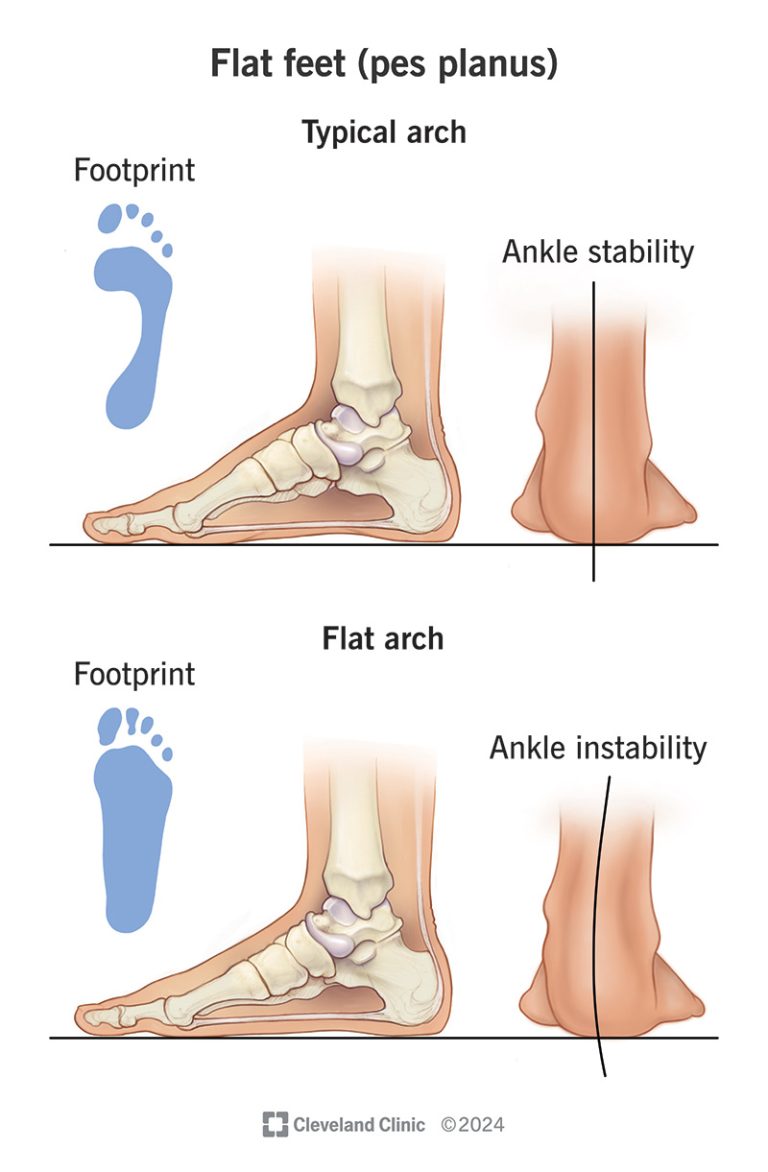
Image Source: Cleveland Clinic
Flat feet, or fallen arches, occur when the arches of the feet collapse, leading to improper weight distribution and alignment issues. This condition can cause pain in the arch, heel, or ankle and may contribute to posture-related problems.
Causes
- Genetic predisposition
- Obesity
- Previous foot injuries
- Age-related weakening of foot structures
Physiotherapy Solutions
- Custom orthotic inserts can provide proper arch support and reduce strain on the foot muscles.
- Strengthening exercises for the intrinsic muscles of the foot can improve stability.
- Getting gait analysis and training to correct walking patterns can prevent further complications as you go about your daily activities.
4. Bunions and Toe Deformities

Image Source: Orthopaedic World
While this has nothing to do with lifestyle or choice of footwear, it is the kind of foot pain that can make you feel embarrassed to even take off your shoes because it is visible externally.
Bunions and other toe deformities, such as hammer toes, result from structural misalignments that cause the toes to become stiff or misshapen. They can lead to significant pain, particularly when wearing tight or narrow footwear.
Those with toe deformities might have a hard time finding the right footwear that will not give them pain with every step.
Causes
- Genetic predisposition
- Arthritis
- Wearing poorly fitting shoes, such as high heels or narrow-toed footwear
🦶🏻 Did You Know?🦶🏻 9 out of 10 women wear shoes that are too small for their feet. Source: Orthopaedic Associates |
Physiotherapy Solutions
- Stretching and mobilisation exercises to improve toe alignment and maintain joint flexibility.
- Wearing proper footwear with the right size and comfortable cushioning alleviates pressure on the affected toes and prevents worsening pain.
- Ultrasound therapy to manage pain and inflammation.
5. Stress Fractures
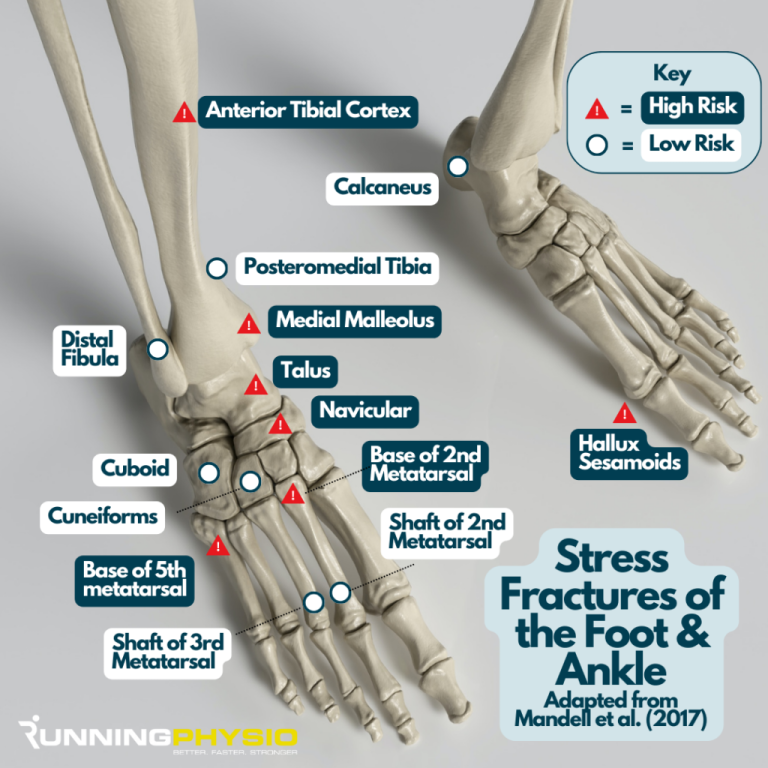
Image Source: Running-Physio
Stress fractures are small cracks in the bones of the foot caused by repetitive stress or overuse. Unlike acute fractures, stress fractures develop gradually and often result in persistent pain that worsens with activity.
Common Causes
- High-impact sports like running, basketball, or gymnastics
- Sudden increases in physical activity without proper conditioning
- Poor bone density due to osteoporosis or nutritional deficiencies
Physiotherapy Solutions
- Rest and non-weight-bearing activities allow the bone to heal without additional stress.
- Gradual reintroduction of weight-bearing exercises under professional supervision to prevent re-injury.
- Strength and balance exercises to improve overall foot mechanics and reduce the risk of future fractures.
How Physiotherapy Can Help with Foot Pain
Individualised Assessment
Booking an appointment with a physiotherapist at a reputable physiotherapy rehab centre is the best and most thorough way to get your foot pain sorted out. Physiotherapists conduct detailed assessments to identify the underlying cause of foot pain. This includes evaluating posture, gait, muscle strength, and joint mobility to create a personalised treatment plan, especially for genetic issues like toe deformities.
Treatment Modalities
- Manual therapy to restore mobility and relieve stiffness.
- Strengthening programs tailored to the individual’s specific needs.
- Advanced techniques such as ultrasound or shockwave therapy accelerate healing and reduce pain.
Holistic Approach
Physiotherapy extends beyond immediate pain relief by incorporating lifestyle modifications, ergonomic advice, and proper footwear recommendations to prevent recurrence. Even when shopping for footwear in the future, you will be more guided in your choice to combine fashion with comfort.
4 Prevention Tips for Foot Pain
- Wear shoes with proper arch support and cushioning to reduce strain on the feet.
- Stretch and warm up before physical activities to enhance flexibility and prevent injuries.
- Avoid overtraining and allow adequate rest periods to prevent excessive stress on the feet.
- Maintain a healthy weight to reduce pressure on the feet and lower the risk of joint strain.
Finding the Right Care for Foot Pain
Foot pain, though common, does not have to be a permanent issue. With the right care and targeted physiotherapy treatments, individuals can alleviate pain, restore mobility, and prevent future problems.
Physiotherapy addresses both acute and chronic foot conditions through a combination of manual therapy, strengthening exercises, and lifestyle recommendations.
If you are experiencing persistent foot pain, don’t wait for it to worsen. Book an appointment with Apple Physio today and take the first step towards pain-free living with our physiotherapy services.
